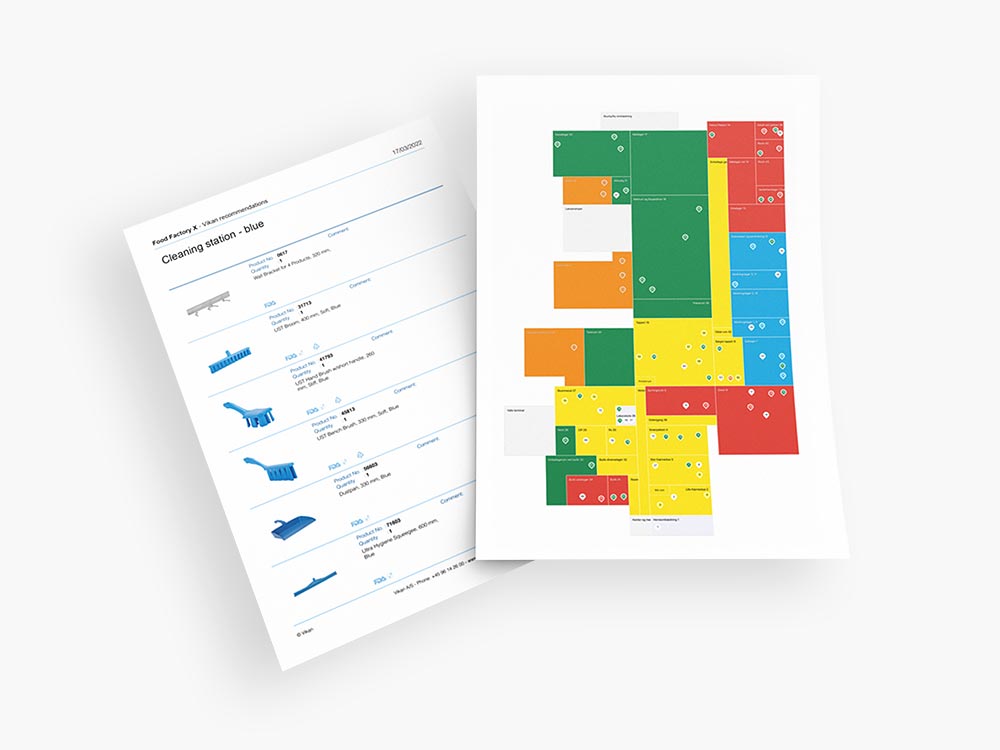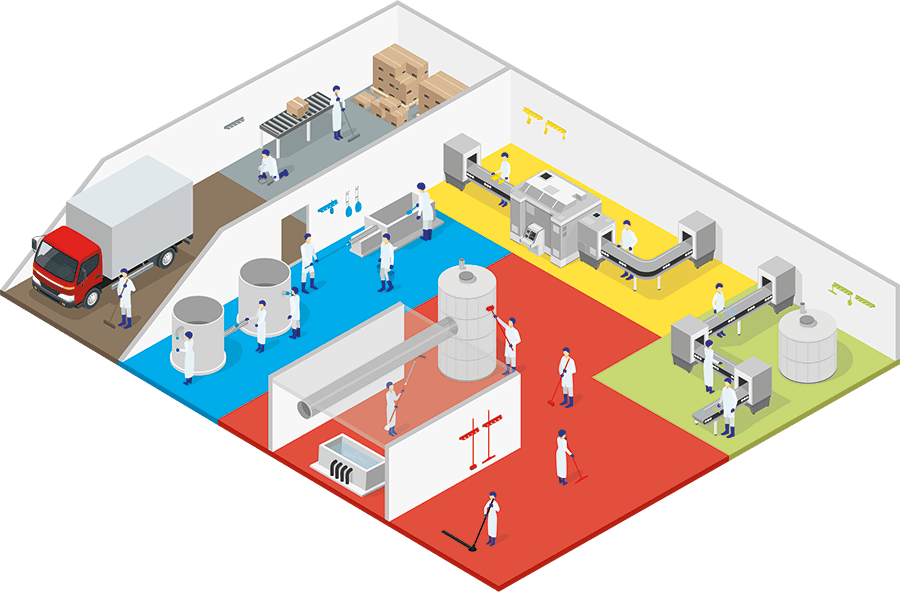

hazards in the
food industry


An Effective
HACCP Initiative
Coding
Hazard Analysis and Critical Control Point Plans
Hazard Analysis and Critical Control Point (HACCP) system is aimed at identifying and preventing hazards primarily in the food processing industry.
The HACCP process follows has seven key steps in the process.
This process has the intention of avoiding hazards in the food industry such as Biological hazards, physical hazards and chemical hazards. HACCP is a continuous process of hazard control and prevention that requires a food business to take responsibility for the safety of food it produces.
Cleaning and safe food handling are classic Critical Control Points. W R & D Wells and their hygiene and food safety product range enables all businesses involved in manufacturing, processing or retailing food products to better manage their HACCP plans.
Colour Coding: An Effective HACCP Initiative
The primary purpose of colour coding is to help prevent cross contamination. Most of our products are available in 6 to 12 colours. By using colour coding in production areas can be separate cleaning zones. Cross contamination can occur in a number of ways:
Industry Colour Coding Applications
Wells will work cooperatively with the QA and Production people to identify what is most effective and practical for their particular organisation.
To discuss your requirements call 03 9699 8999 (AUS) or 09 263 9332 (NZ)
Schedule your Free Site Survey today
Wells Site Survey is the best way for food factories, processing plants, pharmaceutical and other food & beverage facilities to keep hygiene standards up, pass plant audits and keep products healthy and safe within Australia and New Zealand.


